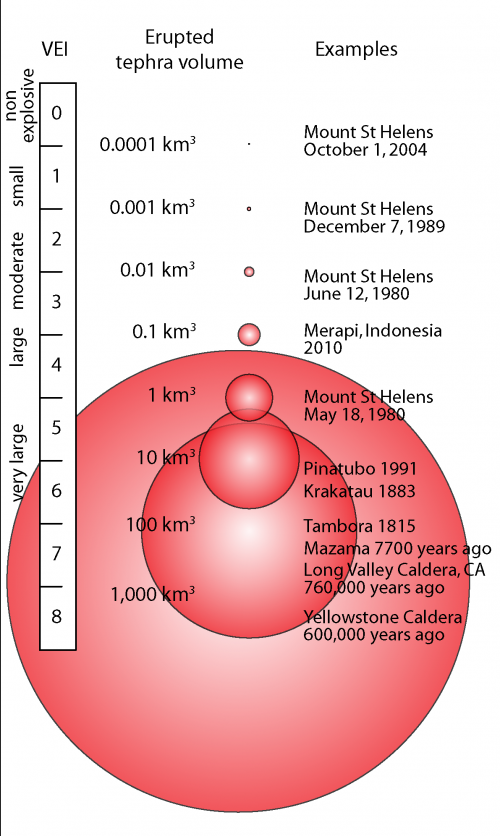The Volcanic Explosivity Index (VEI) & The Threat of Supervolcanoes like in Yellowstone
August 23rd, 2019The Volcanic Explosivity Index (VEI) is a relative measure of the explosiveness of volcanic eruptions. It was devised by Chris Newhall of the United States Geological Survey and Stephen Self at the University of Hawaii in 1982. Newhall and Self, 1982
“……Volcanologists believe a Yellowstone supereruption would bury large swaths of Colorado, Wyoming and Utah in up to three feet of toxic volcanic ash. Depending on the weather patterns, much of the Midwest would receive a few inches, too, plunging the region into darkness. Even the coasts — where a majority of Americans live — would most likely see a dusting as the ash cloud spread. Crops would be destroyed; pastureland would be contaminated. Power lines and electrical transformers would be ruined, potentially knocking out much of the grid...….That’s just the United States. Modeling by meteorologists has found that the aerosols released could spread globally if the eruption occurred during the summer. Over the short term, as the toxic cloud blocked sunlight, global average temperatures could plunge significantly — and not return to normal for several years. Rainfall would decline sharply. That might be enough to trigger a die-off of tropical rain forests.….”



